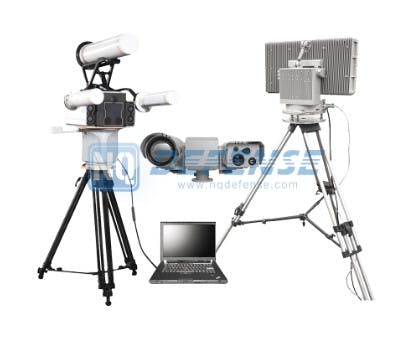If you understand how drones work, you probably already know why they are a threat to defense operations. Due to their ability to carry out targeted strikes with precision and conduct reconnaissance and surveillance, UAVs are a threat to defense security. In the 21st century defense operations have undergone a significant transformation as UAVs have emerged as powerful tools. However, as the use of drones proliferates, the need for countermeasures is also skyrocketing. Wondering what’s the role of anti-drone systems in new age defense bases? Here we go!
Understanding the Threat
To understand how drones can be a threat to defense bases, let’s consider a simple scenario. Having the right technology at the right point can be a game-changer for anyone who wants to breach security and UAVs are one of them. These flying machines without a pilot can be guided effortlessly by onboard systems, controllers, or ground stations. They can be used to do everything from delivering a pizza to bombs and contraband within a few seconds with complete anonymity. In addition, drones can also be used for discrete surveillance, which is why the need for anti-drone jamming systems has become indispensable.
Benefits of Counter UAS for the 21st-Century Defense Bases
In the 21st century, defense bases need so much more than four dimensions of security. In such scenarios here’s what anti-drone jammers and other technologies can be helpful:
- Protection of Defense Assets: Anti-drone systems safeguard defense installations, bases, and vehicles from potential threats. By detecting and neutralizing unauthorized drones, these systems enhance the security of critical assets, preventing unauthorized access and potential damage. This protection ensures the continuity of defense operations and reduces the risk posed by illegal reconnaissance and intelligence gathering.
- Enhanced Defense Protection: Defense personnel face a new set of challenges, including the threat of drone attacks. Anti-drone systems provide an additional layer of protection to defense personnel by detecting and intercepting unauthorized drones before they can cause harm. This increased protection fosters confidence and enables defense personnel to focus on their objectives, thus enhancing operational effectiveness.
- Civilian Security: Beyond defense applications, anti-drone systems also play a critical role in protecting civilian populations and infrastructure. Airports, government buildings, public events, and critical infrastructure such as power plants and nuclear facilities can all benefit from the deployment of anti-drone systems. By mitigating the risk of drone-based attacks, these systems help ensure public safety and maintain social stability.
Conclusion
Jamming drones can be the first line of defense to safeguard any sensitive establishment or premises. C-UAS devices leverage radar, radio frequency (RF) sensors as well as electro-optical/ infrared (EO/OR) sensors to identify drones. Once the drone is detected, sophisticated technologies such as computed vision and ML are deployed to classify drones and differentiate them from other objects in the airspace. Need more information about how anti-drone technologies are advantageous for securing aerial premises? Stay tuned!


No comments yet